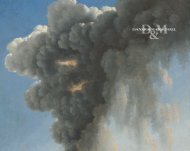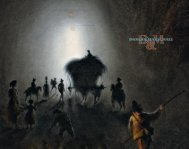Catalogue 2010 - daxer & marschall
Catalogue 2010 - daxer & marschall
Catalogue 2010 - daxer & marschall
Create successful ePaper yourself
Turn your PDF publications into a flip-book with our unique Google optimized e-Paper software.
TWO LANDSCAPES BY CARL SCHuCH<br />
Only in the last twenty years has Carl Schuch’s œuvre become known to a broader public, despite the fact that his paintings are held in many<br />
important public collections in Austria and Germany. This increased awareness of his work is attributable firstly to the catalogue raisonné<br />
compiled by Claus Korte and continued by Roland Dorn and, secondly, to the major retrospective staged in Mannheim and Munich in 1986. 1<br />
The 2000 exhibition titled Cézanne, Manet, Schuch, drei Wege zur autonomen Kunst staged in Dortmund strongly emphasized the importance<br />
of the role he played in the development of European painting. 2 The two exhibitions did much to resolve the marked discrepancy between<br />
art-historical neglect of his work and the remarkable impact his work had on both German and European painting in the second half of the<br />
nineteenth century. However the discrepancy was not entirely successfully resolved.<br />
In his lifetime his work was completely unknown to the art world. He showed at an exhibition on only one occasion and throughout<br />
his career sold only one painting. His paintings were known only to – and collected by – his fellow painters. Plagued by a gnawing perception<br />
of his artistic inadequacies and failings, he denied himself all opportunities to exhibit.<br />
He lived and worked in Paris from 1882 to 1894. Like other artists from the German-speaking world he studied French avant-garde<br />
painters very closely but unlike his compatriots, as an equal, not as a student. His sensitive response to the work of Courbet, Manet und Cézanne<br />
sets him apart from the backward-looking, imitative interpretations painted by so many of his contemporaries. His financial independence<br />
meant that, like Courbet, his artistic career was unfettered by considerations of popularity and the motivation to sell.<br />
He studied in Vienna, later travelling incessantly from city to city and country to country. His peregrinations centred on Munich –<br />
where he came under the influence of Trübner and the artists of the Leibl circle – then on Venice, and then on Paris. He spent the last ten years<br />
of his life in ill health and died in an asylum in a state of dementia in 1903.<br />
Today, his still lifes are almost as highly regarded as his landscapes. But this contradicts his radical attempt to reverse traditional genre<br />
hierarchies in contrast with the majority of his contemporaries. For him, landscape painting took pride of place over history painting. In his<br />
hierarchy of genres – ranked from ‘inferior to superior’ – figure painting was at the lowest rung, then still life painting, architectural painting,<br />
landscape studies and landscape painting. 3 He regarded competence in architectural and still life painting purely as stages in an artist’s<br />
development, the peak of artistic achievement being the ability to paint an ‘ideal landscape’.<br />
1. Gottfried Boehm, Roland Dom and Franz A. Morat (eds.),<br />
57






